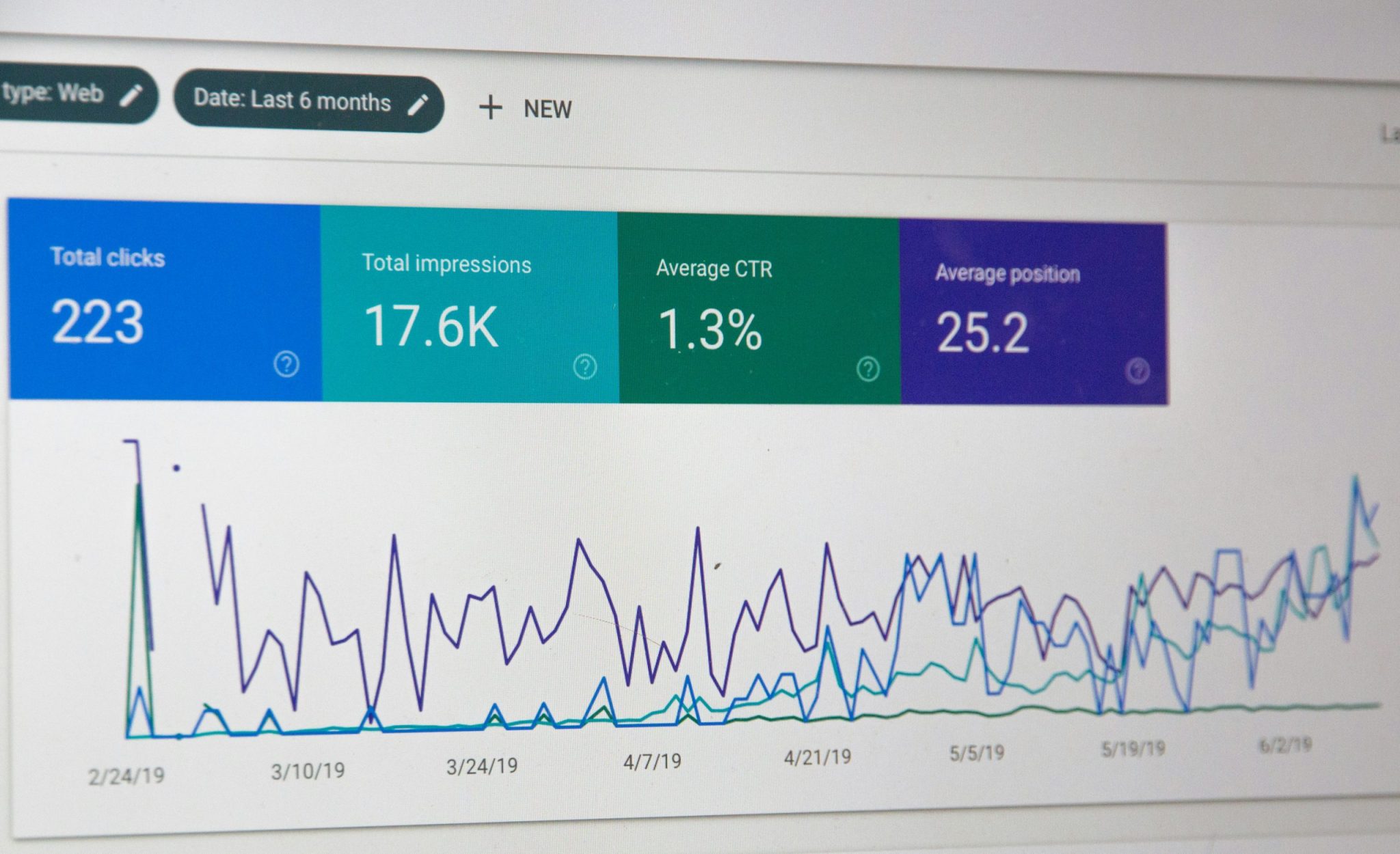Google Search Console vs Google Analytics
Introduction
In the dynamic world of digital marketing, having a solid grasp of analytics tools is crucial for understanding user behavior, website performance, and overall online presence. Two prominent platforms, Google Search Console and Google Analytics, have become indispensable for website owners, marketers, and SEO professionals alike. While both tools play pivotal roles in tracking and analyzing data, their purposes and functionalities differ significantly. This comprehensive guide aims to unravel the intricacies of these platforms, highlight their key differences, and empower you to harness their full potential for your business success.
Table of Contents
- Understanding Google Search Console
- Exploring Google Analytics
- Key Differences Between Google Search Console and Google Analytics
- Leveraging the Power of Both Platforms
- Best Practices for Effective Data Analysis
Understanding Google Search Console
Google Search Console, formerly known as Google Webmaster Tools, is a free web service provided by Google that offers invaluable insights into how your website performs in organic search results. Designed primarily for webmasters, SEO professionals, and online publishers, this tool empowers you to monitor and troubleshoot various aspects of your website’s visibility on Google Search.
Some of the key features of Google Search Console include:
- Sitemap Submission: Easily submit and manage your website’s sitemap, ensuring that Google can effectively crawl and index your web pages.
- Crawl Rate Monitoring: Gain insights into how frequently Google crawls your website, allowing you to identify and resolve potential issues that may hinder crawling.
- Internal and External Link Analysis: Understand the internal and external links pointing to your website, helping you optimize your link structure and identify potential link-building opportunities.
- Core Web Vitals Reporting: Stay informed about your website’s performance based on real-world user data, ensuring a seamless user experience across various devices.
- Keyword Monitoring: Discover the search terms and queries that users employ to find your website, enabling you to refine your content strategy and optimize for relevant keywords.
- Security Issue Monitoring: Receive alerts and notifications about potential security threats, such as hacking attempts or malware infections, allowing you to take prompt action to secure your website.
- Website Speed Reports: Access valuable insights into your website’s loading speed, a critical factor in user experience and search engine rankings.
- User Management: Easily add and manage users with varying levels of access, enabling collaboration and facilitating user-based permissions for your website’s Google Search Console data (For a detailed guide on adding users to Google Search Console, refer to Add User to Google Search Console).
Exploring Google Analytics
Google Analytics is a comprehensive web analytics service that provides detailed insights into user behavior, traffic sources, and marketing campaign performance. Leveraging advanced data collection and analysis techniques, this platform empowers businesses to make informed decisions and optimize their online strategies.
Some of the key features of Google Analytics include:
- Custom Reports: Create tailored reports that align with your specific marketing goals and objectives, enabling you to track and analyze the metrics that matter most to your business.
- Data Visualizations: Leverage various visualization tools, such as charts, graphs, and dashboards, to effectively communicate data insights and identify trends.
- Goal Monitoring: Define and track specific goals, such as website purchases, lead generation, or newsletter signups, allowing you to measure the effectiveness of your marketing efforts.
- Audience Insights: Gain valuable insights into your website’s visitors, including their demographics, interests, and behavior patterns, enabling you to create targeted campaigns and personalized experiences.
- Campaign Tracking: Monitor the performance of your marketing campaigns across various channels, including search engines, social media, and email marketing, helping you optimize your advertising spend and maximize return on investment (ROI).
Key Differences Between Google Search Console and Google Analytics
While both Google Search Console and Google Analytics are powerful tools in the digital marketing landscape, they serve distinct purposes and offer unique functionalities. Understanding their key differences is crucial for leveraging their respective strengths and optimizing your online presence.
Data Acquisition
Google Analytics collects data through website tracking codes (JavaScript snippets) that are embedded on your website’s pages. These codes track user interactions, such as pageviews, events, and e-commerce transactions, and send this data to Google’s servers for processing and analysis.
On the other hand, Google Search Console acquires data directly from Google’s search engine by monitoring your website’s appearance in search results. It tracks metrics like impressions, clicks, and average position, providing insights into how users discover and interact with your website through organic search.
Focus and Scope
Google Search Console primarily focuses on your website’s visibility and performance in organic search results. Its primary goal is to help you optimize your website’s technical aspects, such as crawling, indexing, and on-page optimization, to improve your search engine rankings and organic traffic.
In contrast, Google Analytics has a broader scope, encompassing various aspects of user behavior and website performance. It provides insights into traffic sources (organic, paid, social, referral, etc.), user engagement metrics (bounce rate, session duration, pageviews), conversion tracking, and audience demographics.
Metrics and Reporting
The metrics and reports provided by Google Search Console and Google Analytics differ significantly, reflecting their distinct purposes and areas of focus.
Google Search Console offers metrics related to search performance, including:
- Impressions and clicks
- Average position in search results
- Click-through rate (CTR)
- Top queries and landing pages
- Backlink analysis
- Mobile usability
- Index coverage
Google Analytics, on the other hand, provides a comprehensive set of metrics and reports focused on user behavior and website performance, such as:
- Traffic sources and channels
- User engagement metrics (pageviews, bounce rate, session duration)
- Conversion tracking (e-commerce transactions, goal completions)
- Audience demographics (age, gender, interests, location)
- Campaign performance and attribution
Verification and Setup
The verification and setup processes for Google Search Console and Google Analytics differ slightly.
For Google Search Console, you need to verify ownership of your website by following one of the available methods, such as uploading an HTML file, adding a meta tag, or modifying your DNS settings.
In contrast, setting up Google Analytics involves creating an account, adding a tracking code (JavaScript snippet) to your website’s pages, and configuring data collection settings based on your requirements.
Pricing
Both Google Search Console and the standard version of Google Analytics are free to use, making them accessible to website owners and marketers of all sizes.
However, Google offers a premium version of Google Analytics called Google Analytics 360, which includes advanced features such as machine learning, predictive analytics, and data-driven attribution modeling. This premium version is typically targeted towards larger enterprises and comes with a custom pricing model based on factors like data volume and feature requirements.
Integration and Collaboration
While both platforms are standalone services, they can be integrated to provide a more comprehensive view of your website’s performance.
Google Search Console data can be imported into Google Analytics, allowing you to correlate search performance metrics with user behavior and conversion data. This integration enables you to understand how organic search traffic influences user engagement and conversions on your website.
Furthermore, both platforms support collaboration and team management, allowing multiple users to access and analyze data for a shared website or project.
Error Monitoring
Google Search Console and Google Analytics approach error monitoring differently.
Google Search Console is primarily focused on identifying and resolving technical issues that may impact your website’s visibility and search engine rankings. It provides detailed reports on crawl errors, security issues (such as hacking attempts or malware infections), and mobile usability problems, helping you address these issues proactively.
While Google Analytics does not offer dedicated error monitoring features, it can detect and report on specific types of errors, such as data validation issues, JavaScript errors, and 404 error pages. However, its error monitoring capabilities are more limited compared to Google Search Console.
Video Performance
In 2018, Google introduced a dedicated “Videos” tab within Google Search Console, allowing website owners and content creators to monitor the performance of their video content in search results. This feature provides insights into impressions, clicks, and rankings for video content, enabling optimizations specific to video SEO.
Google Analytics, on the other hand, does not offer dedicated video performance reporting. However, it can track video engagement metrics, such as video views and watch time, by integrating with video hosting platforms or using custom event tracking.
Query Limits
Both platforms impose certain limits on the number of queries or requests that can be made within a given time period.
Google Search Console has specific limits for queries per second (QPS), queries per minute (QPM), and queries per day (QPD). These limits are in place to prevent excessive load on Google’s systems and ensure fair usage for all users.
Similarly, Google Analytics has limits on the number of requests per day per project and queries per second per IP address. These limits are designed to maintain system performance and prevent abuse or excessive resource consumption.
It’s important to note that these limits are rarely encountered by average users and are primarily aimed at preventing excessive or automated querying.
Leveraging the Power of Both Platforms
While Google Search Console and Google Analytics serve distinct purposes, they complement each other in providing a comprehensive understanding of your website’s performance and user behavior. By integrating data from both platforms, you can gain valuable insights and make data-driven decisions to optimize your digital marketing strategies.
Here are some ways to leverage the power of both platforms:
- Correlate Organic Search Performance with User Behavior: By importing Google Search Console data into Google Analytics, you can correlate organic search metrics (impressions, clicks, CTR) with user behavior metrics (bounce rate, session duration, conversions). This integration, much like the synthesis of insights you can achieve with tools such as Google Tag Manager alongside Google Analytics, allows you to understand how users interact with your website after finding it through organic search results, enabling you to identify opportunities for improvement and optimization.
- Refine Content and Keyword Strategies: Analyze the top-performing queries and landing pages from Google Search Console, and cross-reference them with user engagement metrics from Google Analytics. This approach helps you identify content gaps, refine your keyword targeting, and create more relevant and engaging content that resonates with your target audience.
- Monitor Technical and User Experience Factors: While Google Search Console focuses on technical aspects like crawling, indexing, and mobile usability, Google Analytics provides insights into user experience factors like page load times, bounce rates, and conversion funnels. By combining data from both platforms, you can identify and address issues that may be hindering both search performance and user engagement.
- Attribute Conversions to Organic Search: By integrating Google Search Console data with conversion tracking in Google Analytics, you can attribute conversions (e.g., sales, lead generations) to specific organic search queries and landing pages. This information can guide your content optimization efforts and help you prioritize high-converting keywords and pages.
- Identify and Resolve Website Errors: While Google Search Console excels at identifying technical errors that may impact search performance, Google Analytics can detect client-side issues like JavaScript errors and broken links. Combining insights from both platforms allows you to comprehensively identify and resolve website errors that may negatively impact user experience and search rankings.
Best Practices for Effective Data Analysis
To maximize the value of Google Search Console and Google Analytics, it’s essential to follow best practices for effective data analysis and interpretation:
- Define Clear Goals and Objectives: Before diving into data analysis, establish clear goals and objectives for your website and digital marketing efforts. This will help you identify the most relevant metrics and reports to focus on.
- Regularly Review and Monitor Data: Consistently review and monitor data from both platforms to identify trends, patterns, and potential issues. Set up automated reports or dashboards to streamline the process and ensure timely access to critical information.
- Segment and Filter Data: Utilize data segmentation and filtering capabilities to drill down into specific datasets and gain more granular insights. For example, you can segment data by traffic source, device type, location, or user demographics to uncover valuable insights and tailor your strategies accordingly.
- Collaborate and Share Insights: Encourage collaboration within your team or organization by sharing data insights and fostering open discussions. This approach can lead to fresh perspectives, creative solutions, and a collective understanding of your website’s performance and user behavior.
- Continuously Test and Optimize: Treat data analysis as an iterative process. Based on your findings, develop hypotheses, conduct A/B tests, and implement optimizations. Continuously monitor the results, refine your strategies, and embrace a data-driven approach to continuously improve your website’s performance and user experience.
By following these best practices and leveraging the combined power of Google Search Console and Google Analytics, you can gain a comprehensive understanding of your website’s performance, user behavior, and search visibility. Ultimately, this knowledge will enable you to make informed decisions, optimize your digital marketing strategies, and achieve sustainable growth and success in the ever-evolving online landscape.







